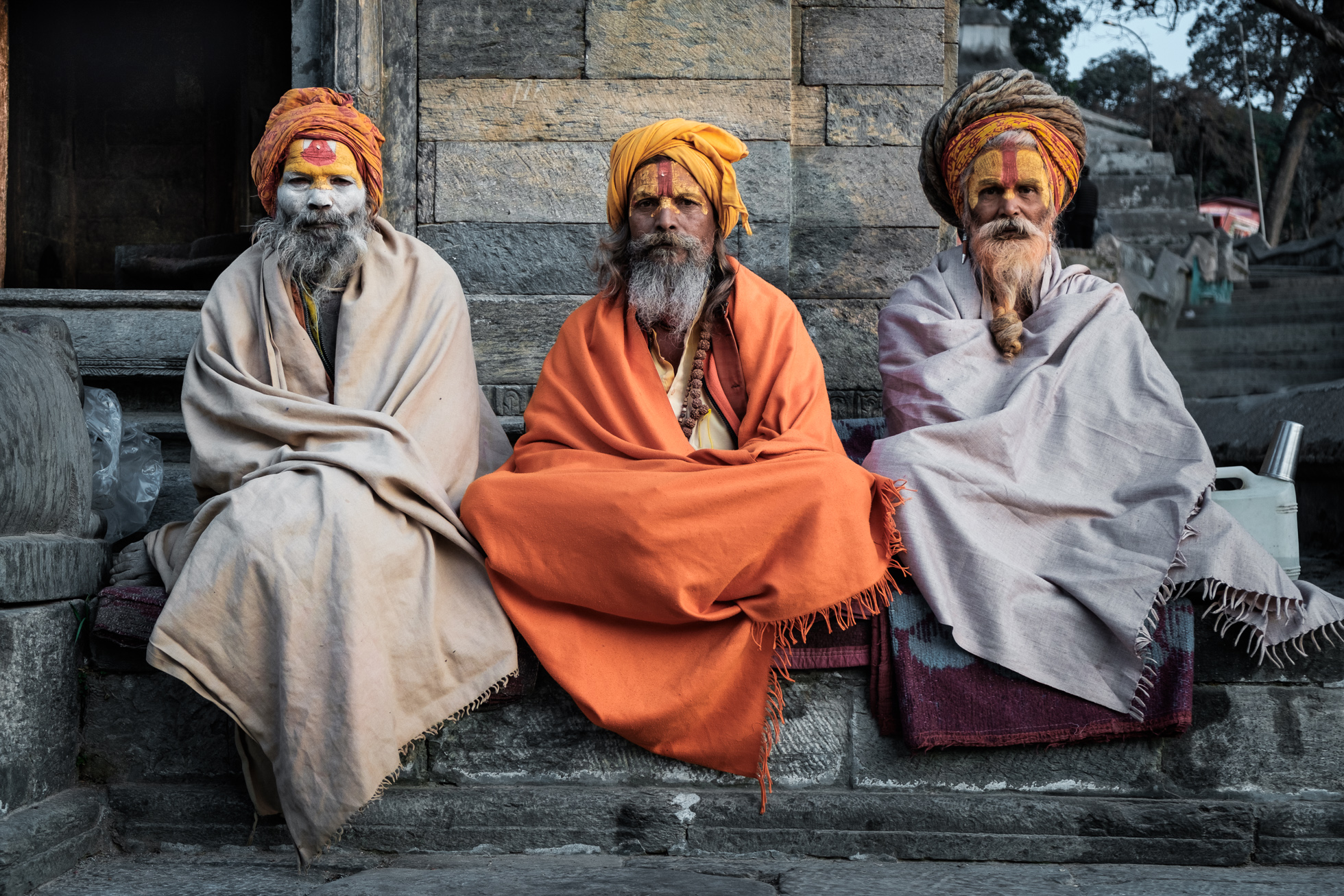Nepal
After my short journey through northern India, I spent a few more days in Nepal. A visit to the birthplace of Buddha in Lumbini, a safari through the Royal Chitwan National Park, a few relaxing hours in Pokhara and a final tour of Kathmand were planned.
After the many urban impressions in Delhi, Jaipur, Agra and Varanasi, I was really looking forward to being able to experience a little more landscape and nature in Nepal.
But it all started with some culture in Lumbini. The place is about 30 km north of the border with India and is considered the birthplace of Siddhartha Gautamas, the founder of Buddhism.
It is said that Buddha was born here in 563 BC. during a journey of his parents. However, the information regarding the place and time of his birth are very controversial.
From Lumbini we went about 130 km east to the edge of Chitwan National Park, where we spent two nights in a small Tharu village. The safari in the national park was definitely a recommendable experience, but the highlight of this stage was undoubtedly the forays through the rural village, with all the many impressions of life and Tharu, in their sometimes very simple wooden huts and sometimes quite colorful stone houses.
Pokhara presented itself completely differently 150km further north. With more than 300,000 inhabitants, it is the second largest city in the country after Kathmandu and, due to its geographical location, it is an ideal starting point for many trekking tours in the adjacent Himalayan mountains. The tourist density and the range of bars, trekking shops, etc. is therefore quite high. A special highlight is undoubtedly the view from the 1600m high mountain Sarangkot, which borders directly on the city. From here you have a fantastic view of the Annapura mountain range with its several 8000m peaks. So we set off very early in the morning and looked for a cozy spot from which we could enjoy the sunrise, which colored the snow-capped peak of the tenth highest mountain on earth in a rich red.
Back in the Pokhara Valley, I decided to take a boat tour across Phewa Lake and a short walk to the World Peace Pagoda, 300m higher, which offers a very nice view of the city.
The last stop on my journey through Nepal was Katmandu, 200km south-east, which we reached after a 6-hour bus ride. The closer we got to the city, the more the effects of the severe earthquake of 2015 could be seen, the epicenter of which was just 80km northwest of the capital and which, with a magnitude of 7.8, cost the lives of well over 8000 people. While intensive work was carried out over many kilometers to remove the road damage, many houses appeared only very poorly repaired or not repaired at all. The Katmandu Valley will undoubtedly need many more years to recover from this catastrophe. However, many cultural assets are lost forever. For example, 50 pagodas, temples and palaces in Kathmandu were damaged or destroyed.
Fortunately, one of the main shrines of the Hindus and Buddhists of Nepal, the Swayambhunath temple complex, was largely preserved. We stopped there first and admired, among other things, the gigantic all-seeing eyes of Buddha on the gilded stupa, which are directed in every direction and can be seen far beyond the borders of Kathmandu. Also known as the Monkey Temple, the complex is two and a half thousand years old, making it one of the oldest Buddhist temples in the world.
All the following impressions are taken partly from the old town of Kathmandu, partly from the Royal Palace Square (Dubar Square), where however many of the once 50 pagodas, temples and palaces were destroyed by the earthquake, and partly from the Pashupatinath temple district, which is just outside of Kathmandu is on the Bagmati River and where, similar to Varanasi in India, the mortal remains of devout Hindus are cremated.
As the final highlight of my trip to Nepal, I had actually planned a flight to Mount Everest on the last day. However, this had to be canceled due to bad weather conditions and so I only had this last view from the airliner of the gigantic Himalayan massif, whose mountain peaks rise far above the cloud cover and are wrapped in the white of their eternal glaciers.


Mal wieder ganz wundervolle Bilder und ein sehr schön geschreibener Bereicht. Danke für den Einblick in das Leben und die Natur von Nepal 🙂
Goregeous shots! Have been in Kathmandu five years ago. Too bad that so many nice places got destroyed.
Btw. what camera did you use?
Well done! Can’t decide what I like most, you weddings, your portraits or your traveling pictures. They are all so great!
Greetings, Pete
@Maurice: Thanks, glad that you like my pictures 🙂 I used a Fuji X-T2 together with the following lenses: Fujinon XF18-55mm f/2.8-4, Fujinon XF55-200mm f/3.5-4.8, Samyang 12mm f/2.0
Wunderbare Reisedokumentationen und beeindruckende Aufnahmen Florian! Wieder ein Beweis dafür, dass nicht nur Portraits deine Berufung sind. 2017 scheint ein ereignisreiches Jahr für dich zu sein. Bin gespannt was da noch alles kommt 🙂
Grüße aus dem Norden,
Olly